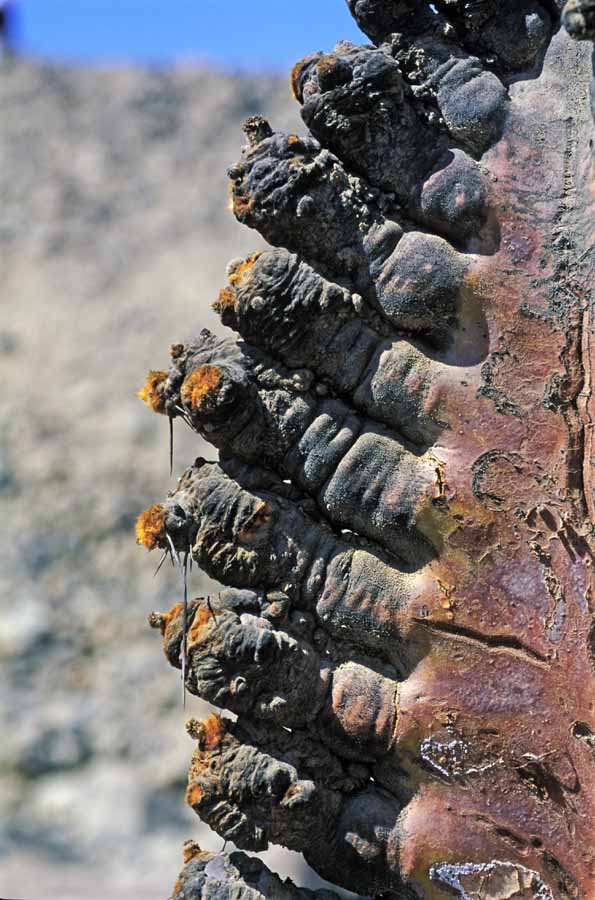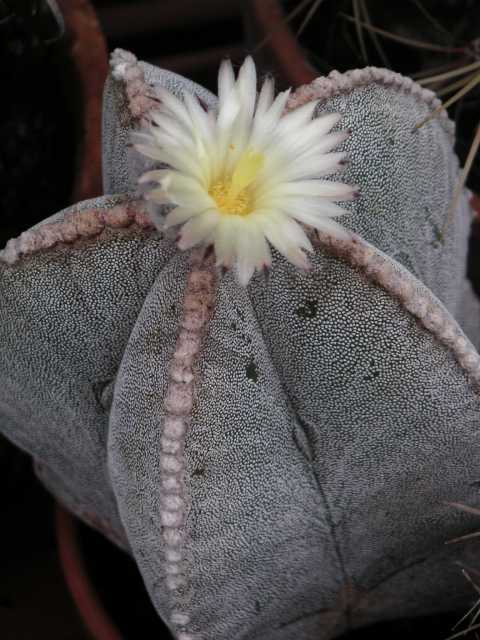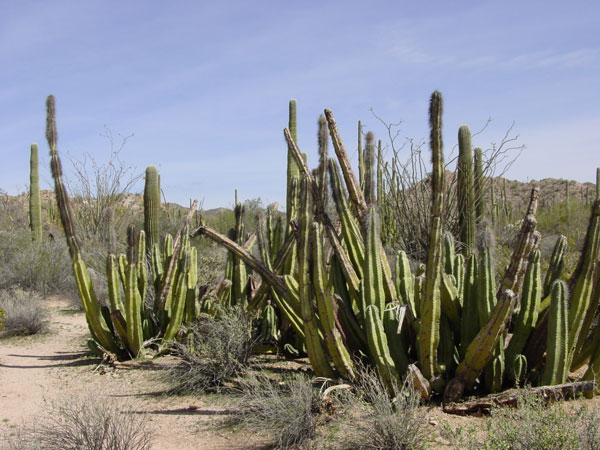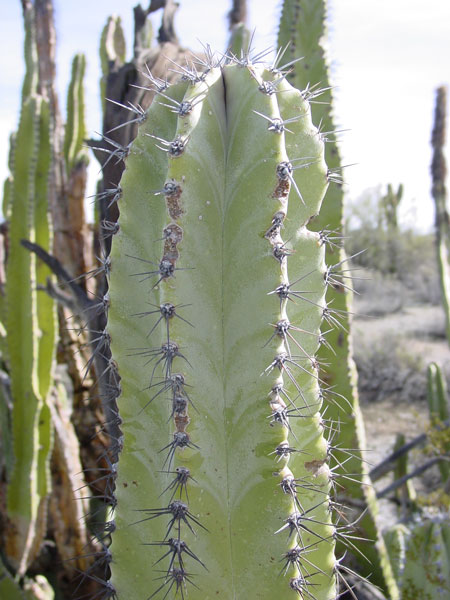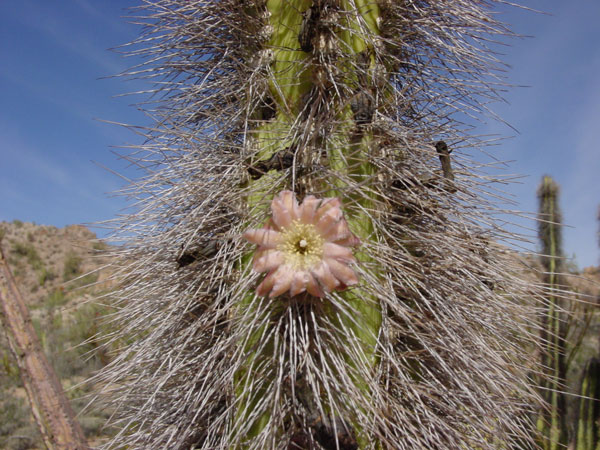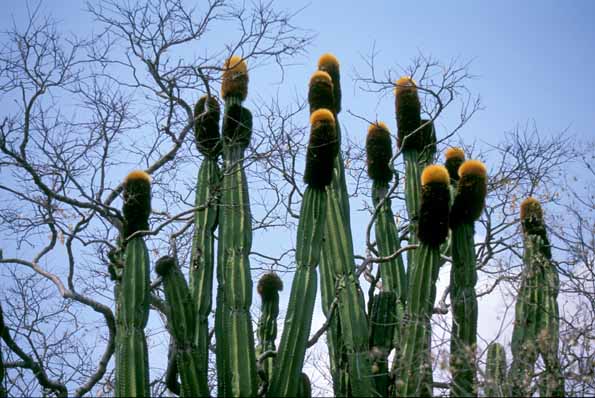Hi Stuart,One thing that puzzles me is the evolutionary route the various cephalium-bearing genera have taken - both the columnar ones and Melos/Discos. What is the purpose of them, and/or how did they come about, do we know?
Stuart Estell
BCSS Birmingham Branch - stuartestell.co.uk
How and why the cephalium evolved are indeed quite interesting questions. This structure evolved several times in the family, in many independent groups both in North America and in South America. Thus, there must be a very good reason for so many different plants have evolved similar structures.
With a few exceptions, each areole of all cacti produce a single flower, and that is it - after this flower is produced, the areole become inactive. Exceptions to this rule are Myrtillocactus in North America, which can produce several flowers per areole:
and Neoraimondia in South America, whose areoles not only produce several flowers per areole but they also flower year after year, the areole growing each year and becoming longer, like a miniature cephalium:
But these exceptions aside, what usually happens in cacti is that once a areole has produced a flower and fruit, it becomes inactive. So, in order to produce more flowers, the cactus has to grow more areoles. And to grow more areoles the cactus has to grow new stem. However, the growth of new stems can be a very costly effort - for each new few centimeters of stem, the plant has to produce lots of inner tissue, epidermis, etc. which demands lots of energy and nutrients. From a cost/benefit perspective, it can be very costly to produce flowers and seeds for reproduction if each time the cactus has to grow new stems and thus spend a lot of energy in the process.
Many cacti devised clever ways of minimizing the amount of energy spent for reproduction by producing more areoles in a smaller area, thus producing more flowers without having to grow significant amounts of new stem. Take for example Astrophytum myriostigma. Young plants of this species have areoles well-spaced along the ribs:
but as the plants grow older the areoles are produced at closer intervals, and big mature specimens have a continuous line of areoles along the ribs:
Thus, a mature Astrophytum myriostigma reaches a good balance where it can produce lots of new flowers each year without having to spend too much energy in growing new stem.
Another example is the Senita Cactus, Lophocereus schottii, which is a columnar cactus species from northweastern Mexico and southern Arizona, US:
Juvenile stems have well-spaced areoles:
Which in maturity will develop very closely spaced areoles, with long spines:
Cacti that develops a cephalium just took a step further on this concept of saving energy while maximizing reproduction potential. In cacti with cephalia, the reproductive parts of the stem are composed of very closely spaced areoles, so that many flowers can be produced with a minimal amount of energy spent with the growth of new stem. There are various types of cephalium:
apical cephalia like those produced by Melocactus:
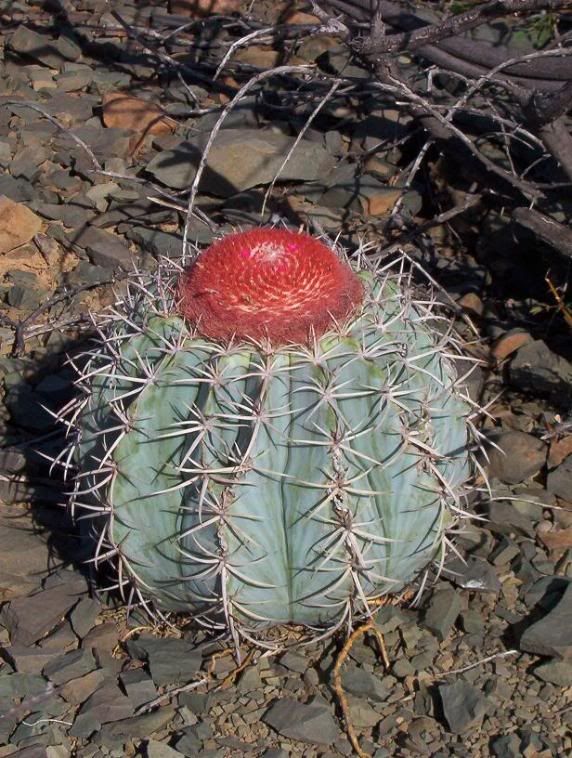
Melocactus zehntneri. Photo: Marlon Machado
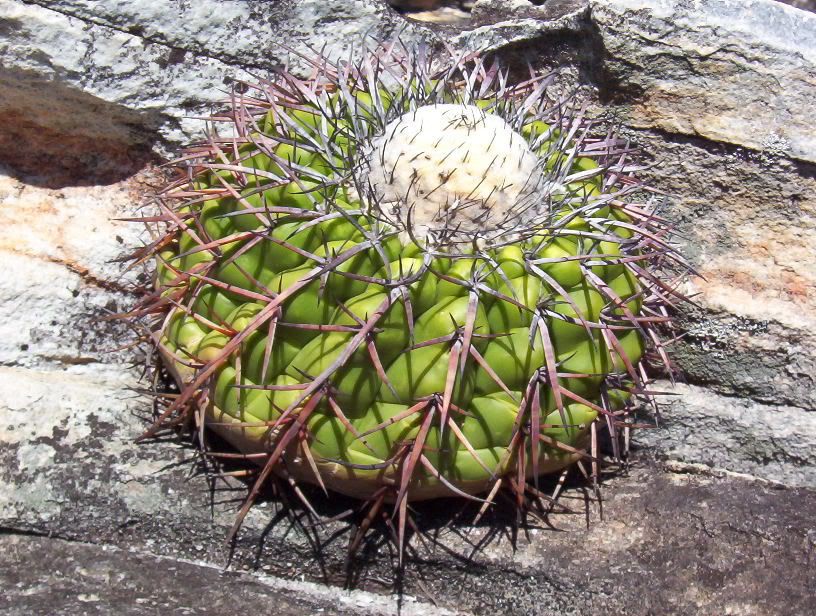
Discocactus placentiformis. Photo: Marlon Machado
lateral cephalia like those produced by, among others, Cephalocereus:
Espostoa:
and Coleocephalocereus:
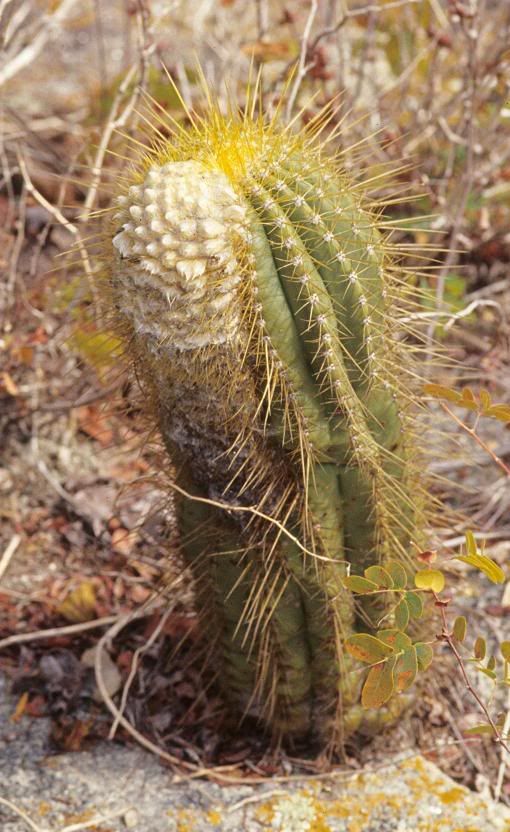
Coleocephalocereus aureus. Photo: Marlon Machado
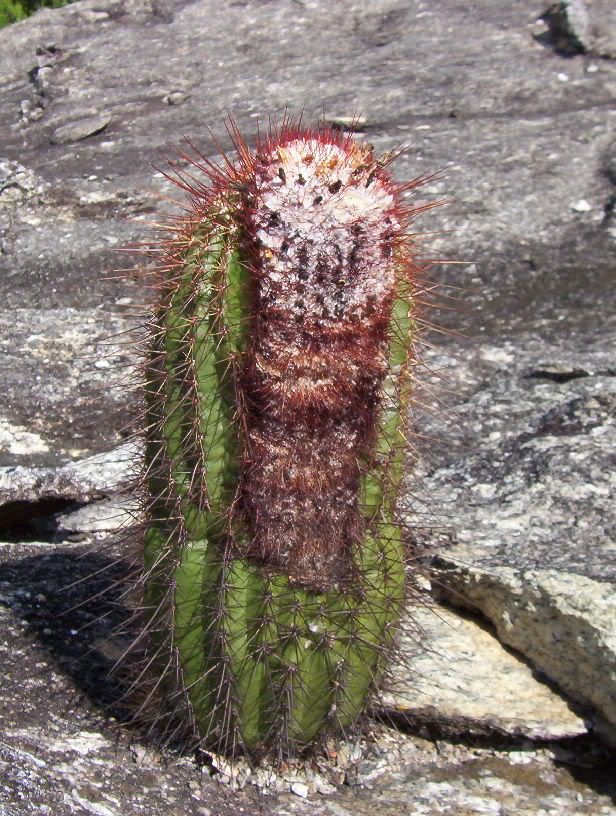
Coleocephalocereus purpureus. Photo: Marlon Machado

Coleocephalocereus buxbaumianus. Photo: Marlon Machado
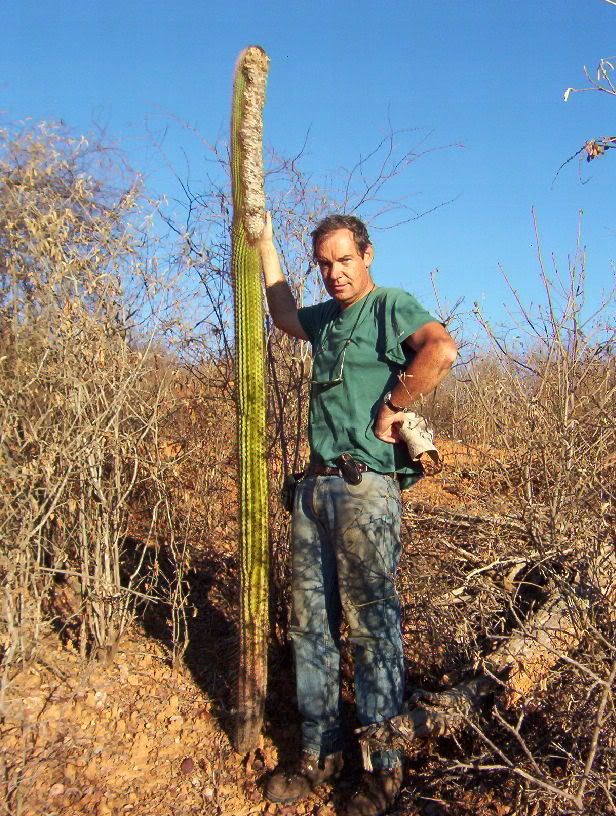
Gerard Delanoy with Coleocephalocereus goebelianus. Photo: Marlon Machado

Arrojadoa dinae. Photo: Marlon Machado
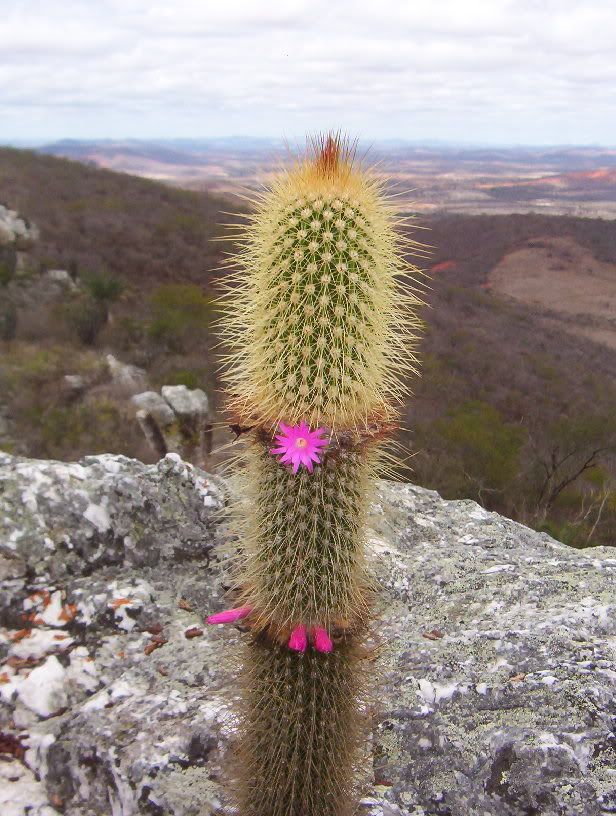
Arrojadoa marylanae. Photo: Marlon Machado
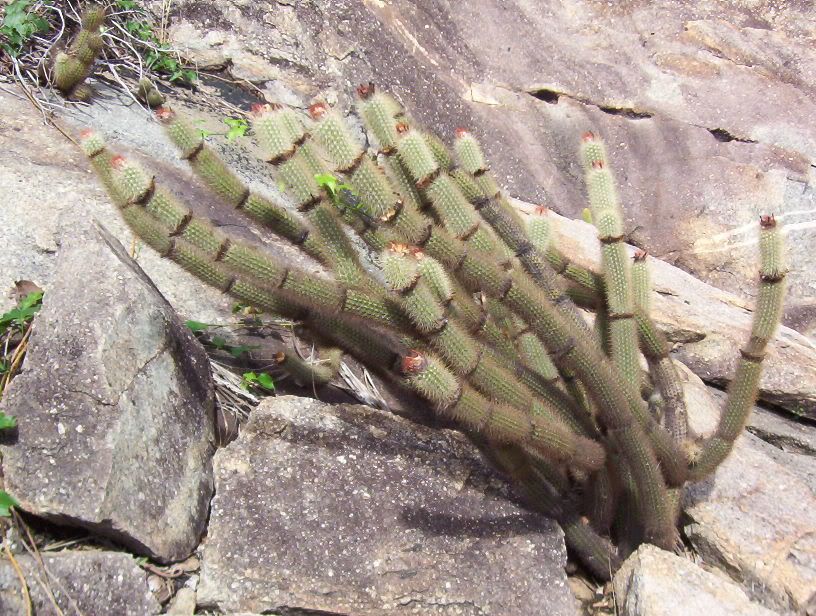
Arrojadoa rhodantha. Photo: Marlon Machado
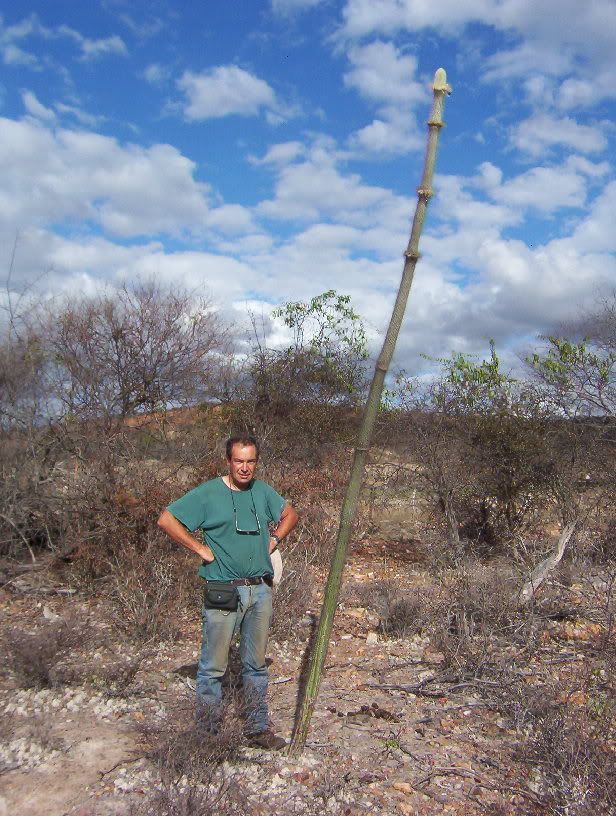
Gerard Delanoy with Stephanocereus leucostele. Photo: Marlon Machado
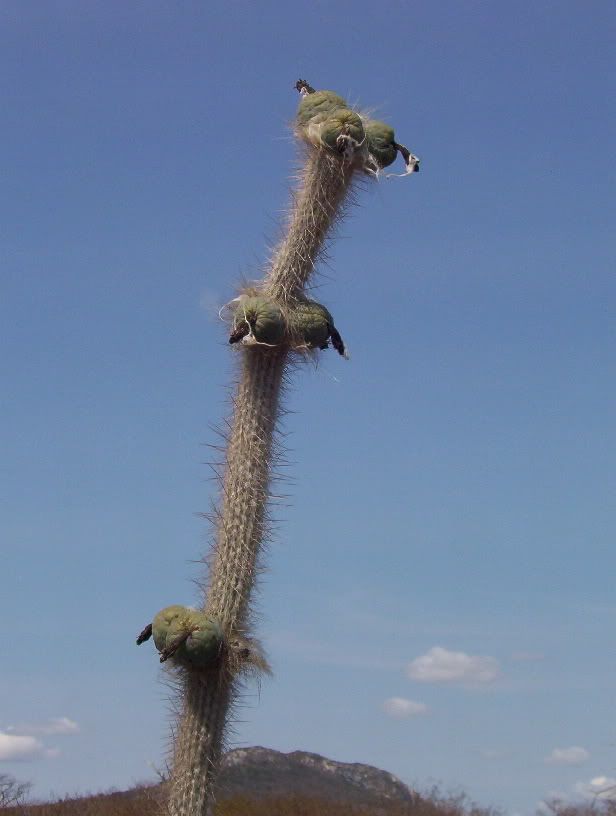
Stephanocereus leucostele in fruit. Photo: Marlon Machado
This is a very interesting subject indeed, and a good place to find more information about the cephalium is the website of Prof. Dr. James D. Mauseth. His text is very instructive, but beware that he uses a lot of technical terms. And, if you still wants to learn more, there is an excellent review also published by Mauseth:
Mauseth, J.D. 2006. Structure?Function Relationships in Highly Modified Shoots of Cactaceae. Annals of Botany 98: 901?926.
Cheers,
